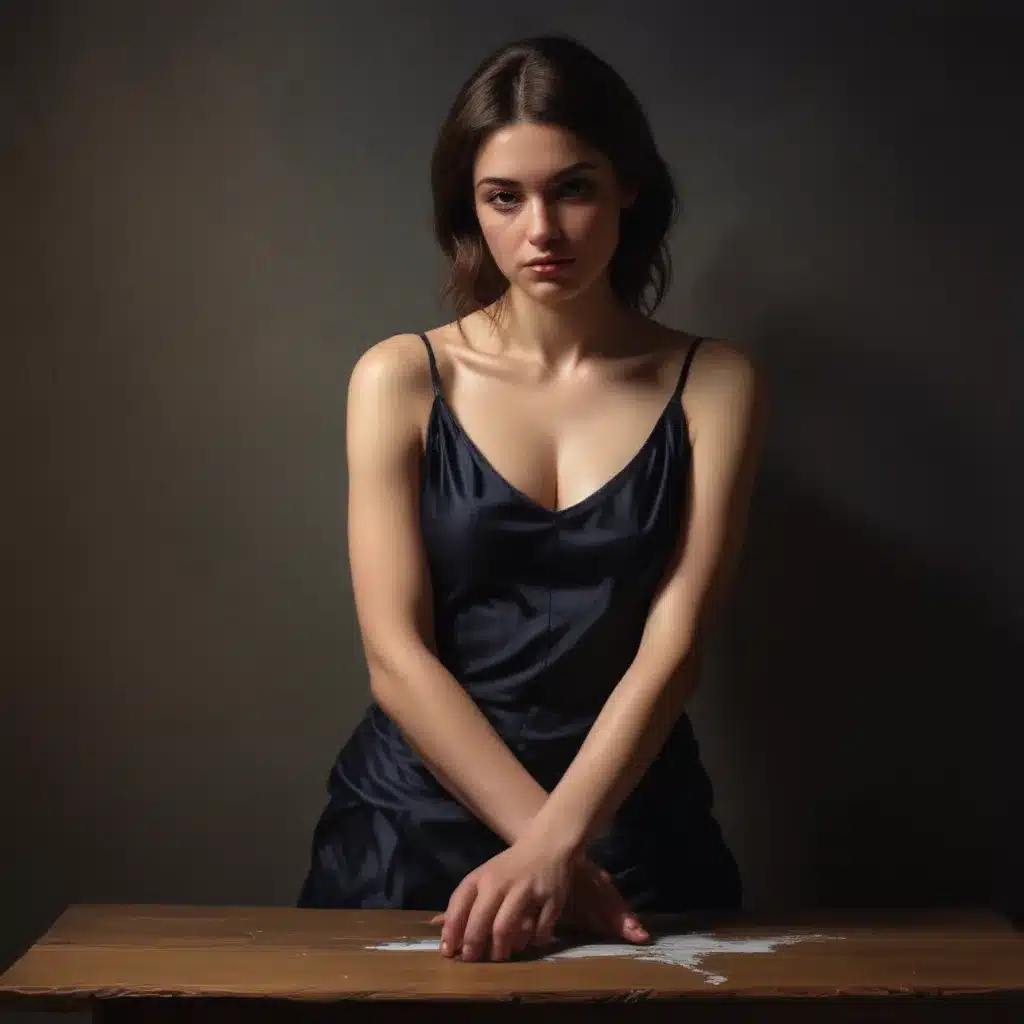
Painting has long been a captivating medium for artists to express their inner worlds and capture the essence of the external one. From the classical masters to the modern experimentalists, the artistry of painting has evolved and diversified, offering a rich tapestry of techniques and styles. One such approach that has captivated artists and art enthusiasts alike is the alluring use of chiaroscuro — the interplay of light and shadow that can imbue a painting with a moody, evocative charm.
Now, this might seem counterintuitive…
The Timeless Appeal of Chiaroscuro
The concept of chiaroscuro, derived from the Italian words “chiaro” (light) and “scuro” (dark), has its roots firmly planted in the Renaissance period. Masters like Caravaggio, Rembrandt, and Goya employed this technique to create deeply atmospheric and psychologically charged paintings. The contrast between the luminous highlights and the enveloping shadows not only lent a sense of drama and mystery but also allowed the artists to sculpt the forms within their compositions, imbuing them with a tangible, three-dimensional presence.
But the allure of chiaroscuro extends far beyond the classical era. Contemporary painters have continued to explore and reimagine this powerful technique, leveraging the duality of light and dark to evoke a wide range of emotions and narratives. From the moody, romantic scenes of Fiona Pickles’ garden photography to the brooding, ethereal works of the digital realm, chiaroscuro continues to captivate and inspire.
Mastering the Interplay of Light and Shadow
At the heart of chiaroscuro lies a delicate balance — the interplay between the illuminated and the obscured. Skillful artists employ a range of techniques to achieve this mesmerizing effect, from the subtle gradients of tonal values to the strategic placement of highlights and shadows.
Pencil Sketching and Drawing
In the realm of drawing, pencil sketching can be an excellent medium for exploring the nuances of chiaroscuro. By utilizing a range of pencil strokes, from delicate feathering to bold, decisive marks, artists can sculpt the forms within their compositions, creating a sense of depth and volume through the play of light and shadow. Techniques like cross-hatching and stippling can be particularly effective in capturing the moody, atmospheric quality of chiaroscuro.
Painting Techniques
When it comes to painting, the possibilities for chiaroscuro are endless. Acrylic and oil painting offer a versatile canvas for artists to experiment with light and shadow. Techniques like glazing, impasto, and alla prima can be used to build up layers of translucent or opaque paint, creating a sense of depth and dimension. Similarly, the use of sfumato, a technique pioneered by Leonardo da Vinci, can soften the edges between light and dark, creating a hazy, atmospheric quality.
For those seeking a more fluid, expressive approach, watercolor can also be a powerful medium for chiaroscuro. The medium’s inherent transparency allows for the natural interplay of light and shadow, while techniques like wet-on-wet and dry brushing can further enhance the moody, atmospheric quality of the painting.
Mixed Media Explorations
In the realms of contemporary art, mixed media has become a popular avenue for exploring the possibilities of chiaroscuro. By combining various materials, such as charcoal, pastels, and acrylic, artists can create rich, textural compositions that blur the boundaries between the tangible and the ethereal. The juxtaposition of media can lend a sense of depth and complexity to the interplay of light and shadow, inviting the viewer to delve deeper into the work.
Finding Inspiration in the Moody Charm
As artists continue to push the boundaries of what is possible with chiaroscuro, the sources of inspiration have become increasingly diverse. Nature and the environment can be a profound wellspring of inspiration, with the ever-changing play of light and shadow found in landscapes, seascapes, and the built environment offering a wealth of creative possibilities.
For those seeking a more introspective approach, the exploration of emotional states and psychological narratives can be a powerful avenue for harnessing the moody charm of chiaroscuro. The ability to create a sense of atmosphere and evoke a specific mood can be a potent tool in the hands of skilled artists, allowing them to craft deeply personal and resonant works.
Embracing the Creative Process
The journey of creating art infused with the moody charm of chiaroscuro is one of exploration, experimentation, and discovery. Aspiring artists are encouraged to embrace a process-oriented approach, where they’re willing to engage in a constant dialogue with their materials and the unfolding composition.
Whether it’s through sketching and drawing, painting techniques, or mixed media explorations, the key is to approach the creative process with an open mind and a willingness to take risks. Embrace the unplanned and the unexpected, for it is often in these moments of serendipity that the most captivating works of art are born.
Conclusion: Illuminating the Depths of Artistic Expression
The allure of chiaroscuro lies in its ability to transport the viewer beyond the surface of a painting, inviting them to plunge into the depths of emotion, atmosphere, and narrative. By mastering the interplay of light and shadow, artists can craft works that resonate with the very essence of the human experience, evoking a sense of mystery, contemplation, and the profound beauty that can be found in the shadows.
As you continue your artistic journey, embrace the moody charm of chiaroscuro, and let it be a guiding light on your path to self-discovery and artistic expression. The rewards of this exploration are boundless, for in the dance of light and dark, we uncover the hidden truths that lie at the heart of the creative spirit.
Tip: Experiment with different media to discover your unique style